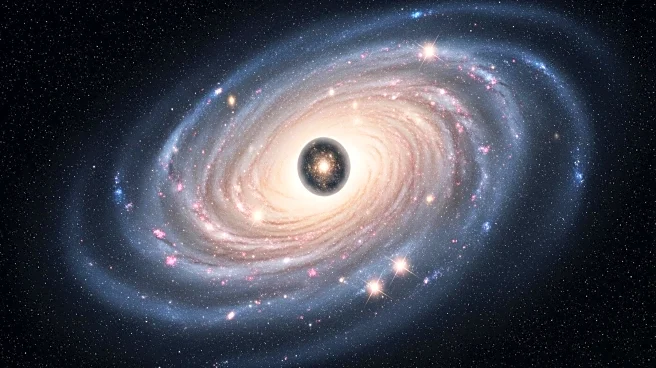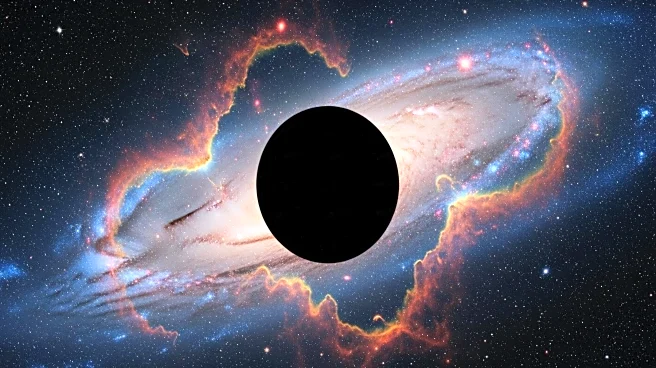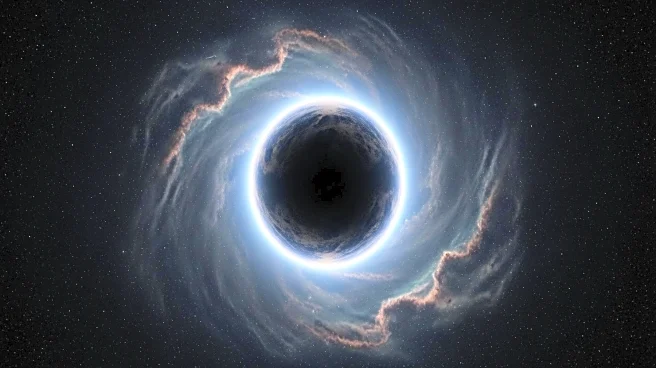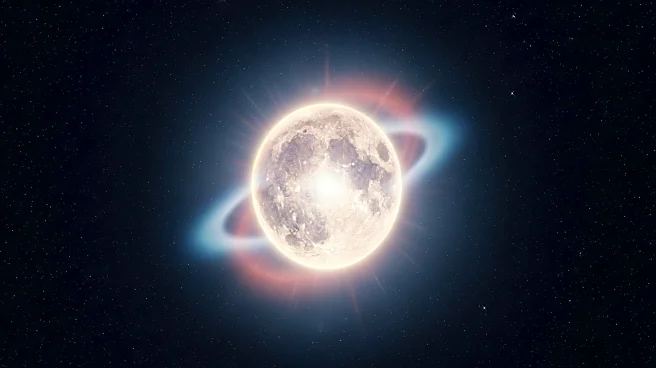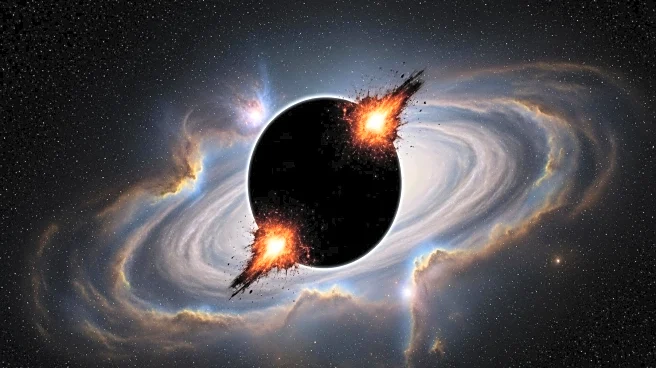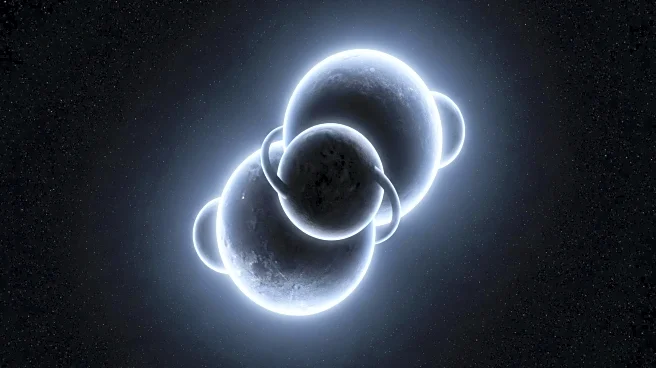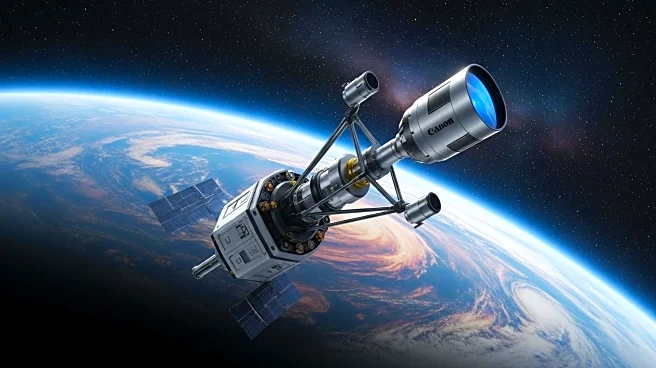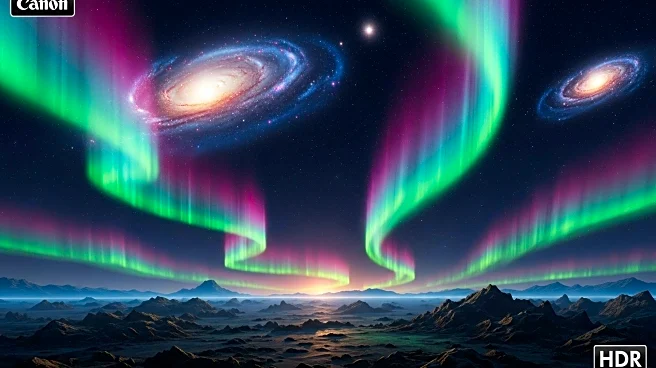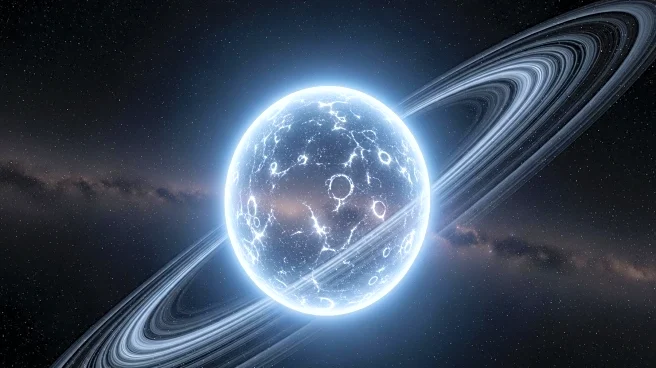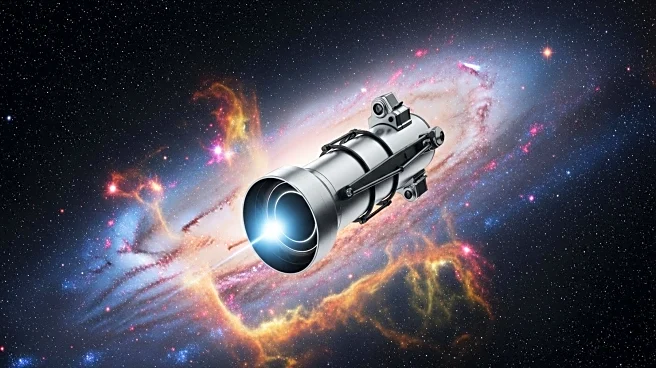What's Happening?
Astronomers have identified a rogue planet, Cha 1107-7626, experiencing an unprecedented growth spurt. Unlike typical planets that orbit stars, rogue planets are free-floating. Using the European Southern Observatory's Very Large Telescope, researchers observed this planet consuming gas and dust at a rate of six billion tons per second, the fastest ever recorded for any planet. Located about 620 light-years away in the constellation Chamaeleon, Cha 1107-7626 has a mass five to ten times that of Jupiter. The planet is still forming, fed by a surrounding disk of gas and dust. The study, led by Víctor Almendros-Abad from the Astronomical Observatory of Palermo, highlights the dynamic nature of planetary-mass objects. The findings suggest that rogue planets may share formation characteristics with stars, as similar accretion bursts have been observed in young stars.
Why It's Important?
This discovery is significant as it challenges existing theories about planet formation and the nature of rogue planets. The rapid accretion rate observed in Cha 1107-7626 blurs the line between stars and planets, suggesting that some rogue planets may form similarly to stars. This insight could reshape our understanding of planetary systems and the processes that govern their formation. The study also highlights the role of magnetic fields in driving accretion, a phenomenon previously observed only in stars. Understanding these processes could have broader implications for astrophysics, potentially influencing how scientists model the formation of celestial bodies.
What's Next?
The discovery opens new avenues for research into rogue planets and their formation. The upcoming Extremely Large Telescope (ELT) by ESO, with its advanced capabilities, is expected to uncover more rogue planets, providing further insights into their star-like behaviors. This could lead to a deeper understanding of the early stages of planetary formation and the conditions that allow rogue planets to exist. Continued observations and studies will aim to explore the chemical changes in the accretion disks of these planets, further elucidating the processes that drive their growth.
Beyond the Headlines
The findings raise intriguing questions about the nature of planetary formation and the potential for rogue planets to possess star-like characteristics. This challenges traditional distinctions between stars and planets, suggesting a continuum in the formation processes of celestial bodies. The study also underscores the importance of advanced telescopic technology in expanding our understanding of the universe, highlighting the potential for future discoveries that could redefine astrophysical concepts.

